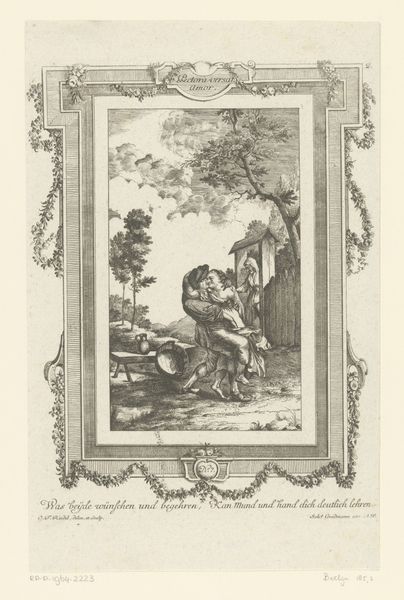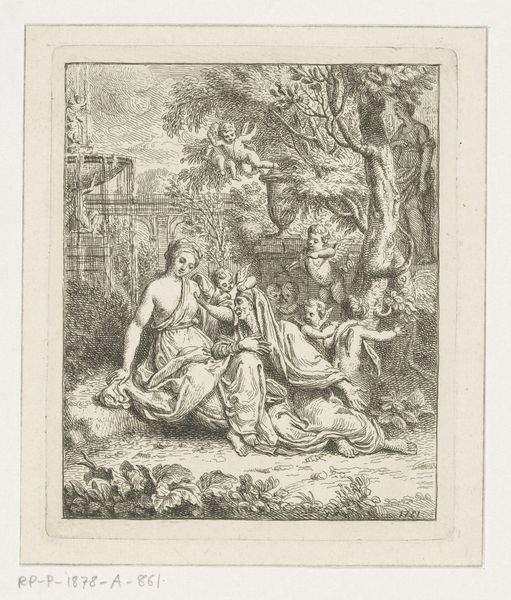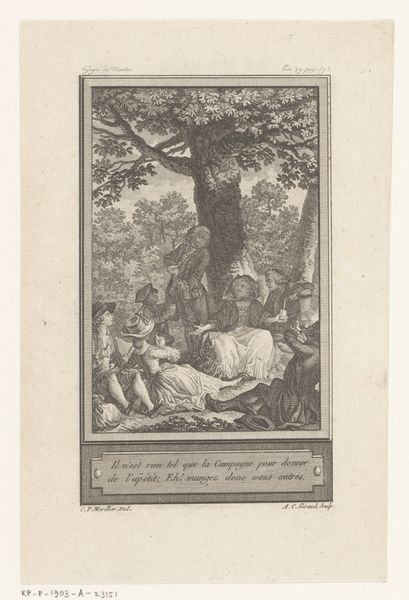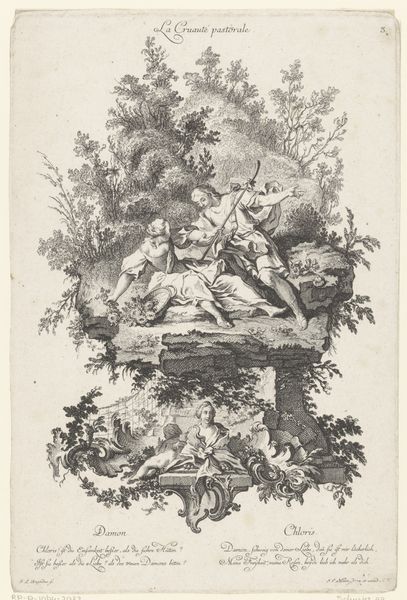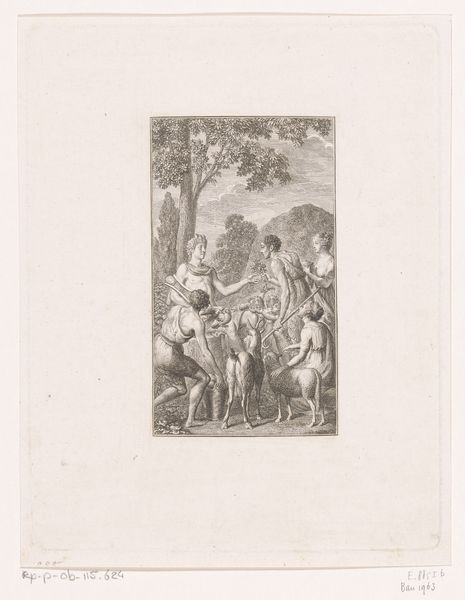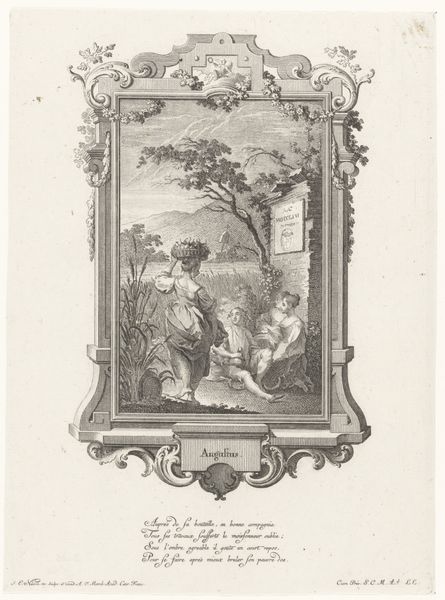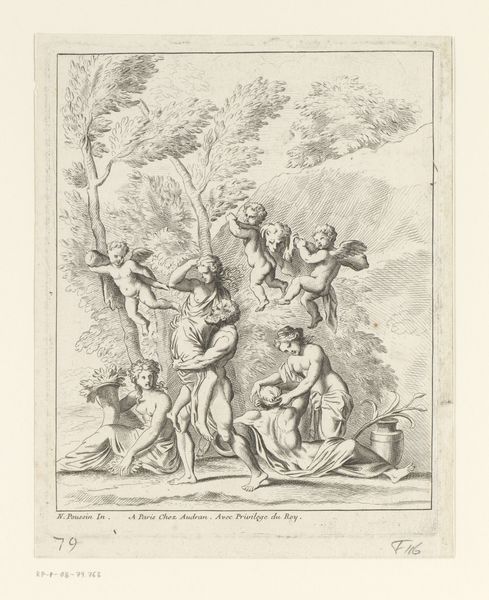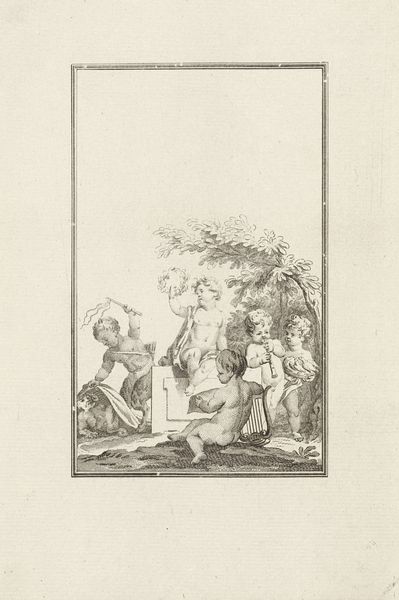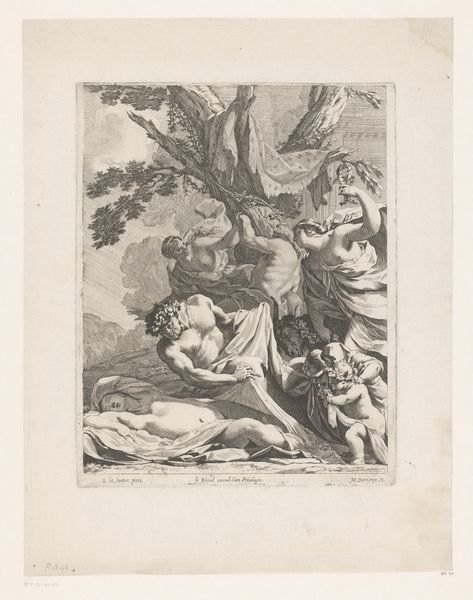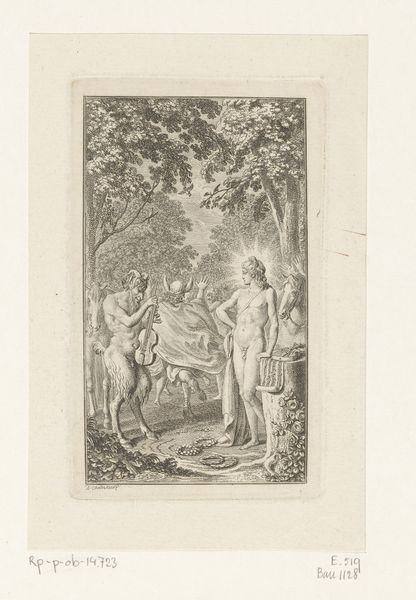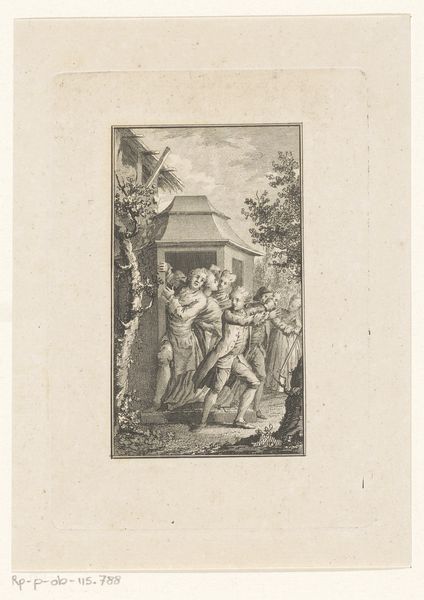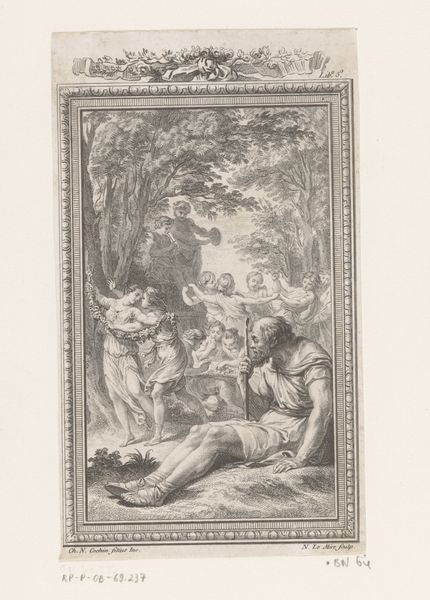
Dimensions: height 154 mm, width 96 mm
Copyright: Rijks Museum: Open Domain
Curator: Look at this scene. Carl Leberecht Crusius created "Man teaching two children in the open air" sometime between 1750 and 1779. It’s an engraving, currently held here at the Rijksmuseum. Editor: It has a strangely peaceful air. I can almost hear the quiet rustle of leaves. It also looks extremely posed, like everyone was told to stay still. Curator: Precisely. We’re looking at an example of 18th-century academic art, steeped in the conventions of the era. Think about the enlightenment, and its emphasis on reason and education, which glorified learning and instruction. Genre paintings, like this one, played a key role in promoting this. Editor: So, the image of this refined man tutoring children beneath a shady tree is less an observed scene, and more of a staged statement. The blank panel at the bottom—where presumably text could be added—almost underlines that this has didactic purpose. It’s more staged than natural. Curator: Exactly. Crusius and other artists capitalized on the increasing demand for idealized images that showcased the values of the emerging middle class and the aristocratic elite. Editor: Still, there’s a certain sweetness. I like that you see nature coming into it too, to provide shade, in place of some dark book-lined room. Although even that choice might be part of a narrative that education thrives best in harmonious, natural surroundings? Curator: Quite possibly. It certainly reflects the baroque interest in landscape painting. So, this single image blends genre, landscape, and historical painting all at once. Editor: It leaves you wondering what he’s teaching them. I imagine grand pronouncements on civic duty, delivered with a theatrical flourish and the weight of social expectation. Curator: That captures the period rather nicely, I think! A fascinating piece when you unpack its many layers, don’t you agree? Editor: Absolutely. I'm now even more convinced of its deliberate composition, its historical value really lies in how cleverly it embodies that period’s values and priorities.
Comments
No comments
Be the first to comment and join the conversation on the ultimate creative platform.
